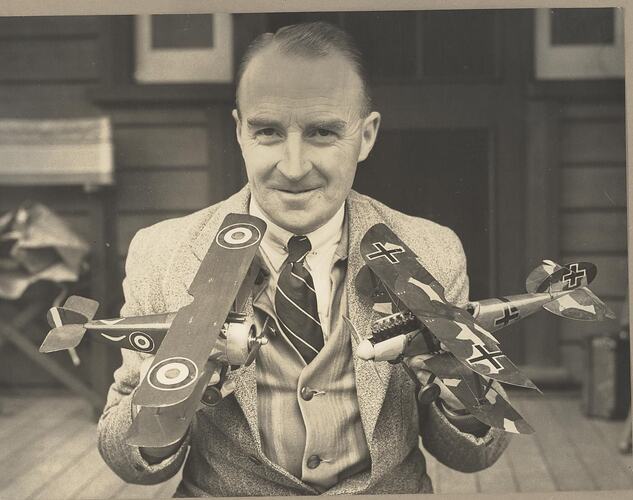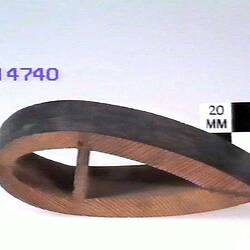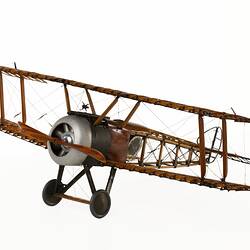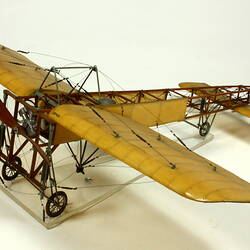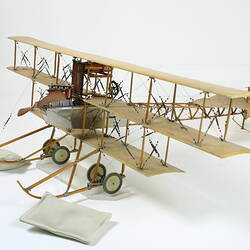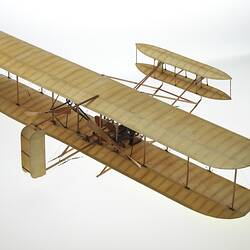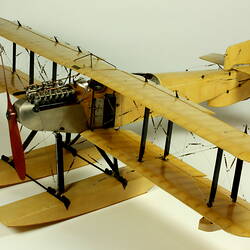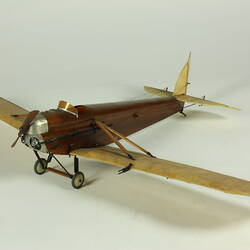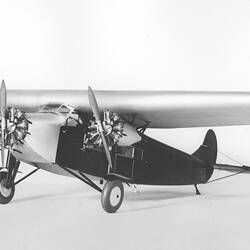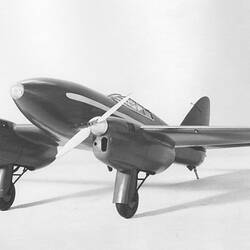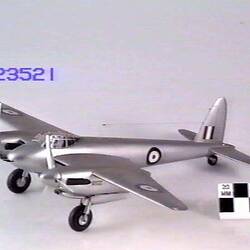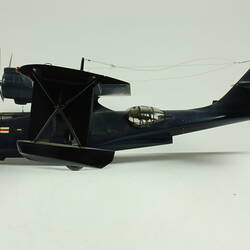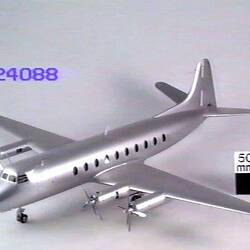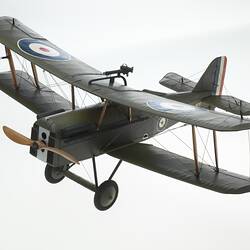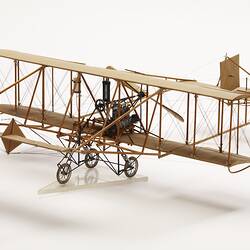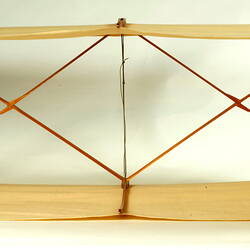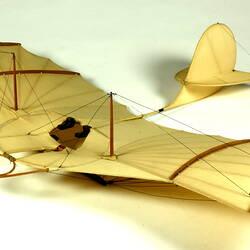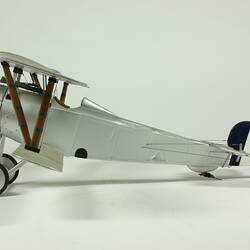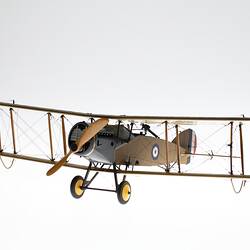Born at Hawthorn, in 1893, Harold P. Wood's interest in aviation was first encouraged by his father Mr Harold Archibald Wood, who worked as an engineering draughtsman with the Melbourne & Metropolitan Board of Works (M.M.B.W.) and took an active interest in the achievements of the Wright brothers and other overseas aviation pioneers. Harold first began experimenting with aerofoil designs and model aircraft in 1909 and by November 1910 had managed to produce a model monoplane of his own design with a 36-inch main wingspan, forward-mounted elevator and two counter-rotating rearward-facing propellers powered by twisted strands of square rubber. This development was achieved fully eight months before John Duigan completed the first manned flight in an Australian designed aeroplane at Mia Mia in central Victoria, in July 1910. A report in the Melbourne 'Argus' on 14 November 1910 described demonstration flights of Wood's model at Mont Albert, commenting that the model had achieved flights of up to 175 yards at altitudes of 60 feet.
The following month, Wood again demonstrated one of his models in flight at the final day of the annual Austral Wheel Race meeting, conducted by the Melbourne Bicycle Club at the Melbourne Cricket Ground, where one of his model was reported to have knocked the hat off a spectator in the upper stands. Further reports in the Melbourne 'Argus', 'Herald' and the 'Scientific Australian' document subsequent improvements in Wood's model designs which by November 1911 had managed to achieve flights of up to 450 yards lasting a minute. By April 1912, Harold claimed a world record for model aircraft with a sustained flight of 118 seconds covering a distance of over half a mile in a straight line, at a speed of 25 miles per hour. In commenting on the success of Wood's latest model monoplane designs an 'Argus' reporter claimed 'The amazing thing about them is their absolute mechanical stability and the certainty with which they fly. Not for one moment, even in a gusty wind, do they show any symptom of overturning, and, when the power is used up, and the screw stops, they land as gently as butterflies after a few soaring circles - what aviators call the volte plane.' By July 1912, Harold Wood had built some 33 model aircraft and achieved flights lasting up to 9 minutes reaching heights of 2,000 ft. He had also begun building his first models to order for customers like Wesley College school boy, Harry Rigby (later a captain in the Royal Flying Corps) and the 1st Hampton Boy Scouts. Wood married Eileen Mateer on 2 December 1916 at Canterbury in Melbourne, having enlisted in the AIF on 4 November 1916. He embarked on HMAT Omrah on 17 January 1917.
During the First World War, Harold served with the Australian Flying Corps with B Flight, No.4 Squadron in France first as a motorcycle dispatch rider, then later a rigger, engine mechanic and finally in the stores and equipment section. This unit was equipped with the Sopwith F1 Camel and later the Sopwith Snipe. Wood was engaged to make minute examinations of any captured enemy aircraft, taking samples of fuel and lubricants and keeping tab on any new German instruments or methods of construction, reporting on items of interest to the British Headquarters. After the Armistice No.4 Squadron were moved to Bickendorf Aerodrome, near Cologne, Germany, to take possession of German aircraft surrendered to the allies, and Harold began building models in his spare time, producing a Sopwith Camel and a German Albatros DVa, both built to a scale of ½ inch to 1 foot using materials salvaged from damaged aircraft. Later, when returning to Australia on the troopship 'Kaiser-I-Hind' in April-May 1919, Harold constructed further models to help break the monotony of the voyage. During the voyage he also conceived the idea of building a series of museum display models to document some of the key developments in aviation. Back in Melbourne, Mr R.H. Walcott, curator of the Industrial & Technological Museum readily agreed to the scheme and commissioned Harold to build the first of his models for the Museum, a ¾ inch to 1 foot (1:16 scale) model of the Smith Brothers Vickers 'Vimy' biplane that achieved the first flight from England to Australia in 1919. The model was completed in 1923.
Meanwhile Harold had moved to Benalla, where he was employed as District Engineer with the Country Roads Board (C.R.B.). However he continued building model aircraft in his spare time, working two or three evenings a week. While living in Benalla he completed models of Kingsford Smith's Fokker monoplane Southern Cross and the DH88 Comet for the Museum. He wrote to Walcott that one of the Avro X airliners belonging to Kingsford Smith and Charles Ulm's Australian National Airways had landed at Benalla. He quickly rushed to the airfield to take measurements of the aircraft for the Southern Cross model. The Museum also wrote to Charles Ulm seeking details of the construction of the Southern Cross. Wood continued making detailed scale models for the Museum over the next 43 years, producing some 21 models in total, documenting key events and designs in the history of aviation from the 1890s to the late 1950s. These models still form a large part of Museum Victoria's aviation collection today. He died in September 1982.
More Information
-
Keywords
-
Authors
-
Article types
